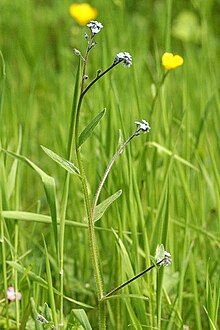
Boraginaceae, the borage or forget-me-notfamily, includes about 2,000 species of shrubs, trees, and herbs in 146 to 156 genera with a worldwide distribution.
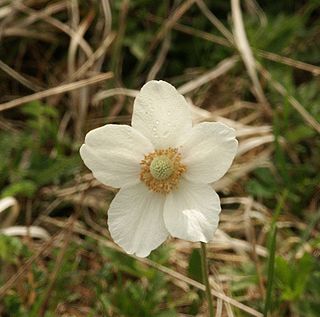
Anemonoides sylvestris, known as snowdrop anemone or snowdrop windflower, is a perennial plant flowering in spring, native to meadows and dry deciduous woodlands of central and western Europe and temperate Asia. It forms spreading patches, sometimes aggressively spreading.

Myosotis is a genus of flowering plants in the family Boraginaceae. The name comes from the Ancient Greek μυοσωτίς "mouse's ear", which the foliage is thought to resemble. In the Northern Hemisphere, they are colloquially known as forget-me-nots or scorpion grasses. Myosotis alpestris is the official flower of Alaska and Dalsland, Sweden. Plants of the genus are commonly confused with Chatham Islands' forget-me-nots, which belong to the related genus Myosotidium.
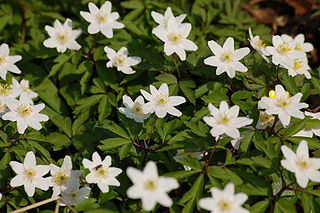
Anemonoides nemorosa, the wood anemone, is an early-spring flowering plant in the buttercup family Ranunculaceae, native to Europe. Other common names include windflower, European thimbleweed, and smell fox, an allusion to the musky smell of the leaves. It is a perennial herbaceous plant growing 5–15 cm (2–6 in) tall.
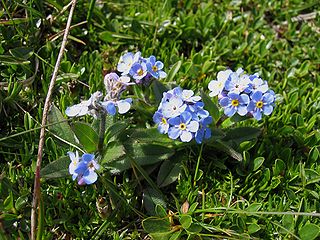
Myosotis alpestris or alpine forget-me-not is a herbaceous perennial plant in the flowering plant family Boraginaceae.

Myosotis scorpioides, the true forget-me-not or water forget-me-not, is a herbaceous perennial flowering plant in the borage family, Boraginaceae.

Myosotis stricta is a plant species of the genus Myosotis. Common names include strict forget-me-not and blue scorpion grass.

Anemonoides trifolia, the three-leaved anemone, is a perennial herbaceous plant in buttercup family (Ranunculaceae).
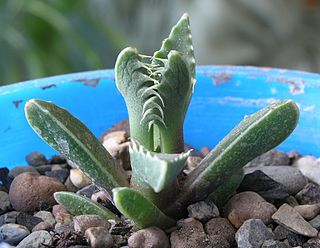
Faucaria is a genus of around 8 species of succulent subtropical flowering plants of the family Aizoaceae. The name comes from the Latin word fauces because of the appearance of "teeth" on the leaves.
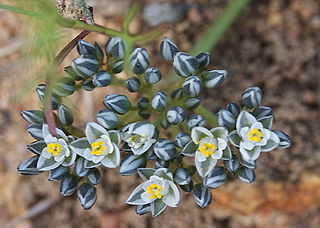
Limeum is a genus of flowering plants. It includes 25 species.

Carlos Adolfo Lehnebach is a New Zealand botanist. He is employed as a botany curator at the Museum of New Zealand Te Papa Tongarewa. Lehnebach has a master's degree and a PhD from Massey University.

Myosotis abyssinica is a species of plant in the family Boraginaceae. It can be found in Ethiopia, Sudan, Bioko Island, Rwanda, the Democratic Republic of Congo (Zaire), Uganda, Kenya, Tanzania, and Cameroon.

Myosotis sparsiflora is a species of flowering plant belonging to the family Boraginaceae.
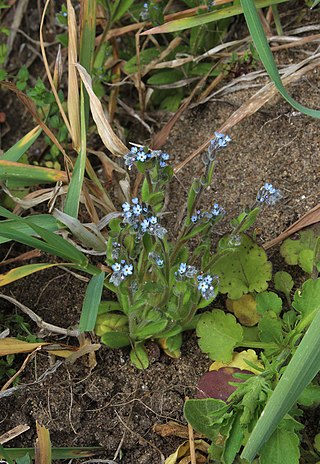
Myosotis micrantha is a species of flowering plant belonging to the family Boraginaceae.

Draba nemorosa is a species of flowering plant belonging to the family Brassicaceae.

Myosotis rehsteineri is a species of flowering plant belonging to the family Boraginaceae.

Myosotis secunda, also known as the creeping forget-me-not is a species of flowering plant from the family Boraginaceae.

Myosotis rakiura is a species of flowering plant in the family Boraginaceae, endemic to southern South Island and Stewart Island/Rakiura of New Zealand. Joseph Beattie Armstrong described the species in 1881. Plants of this species of forget-me-not are perennial rosettes which form loose tufts or clumps, with ebracteate, erect inflorescences, and white corollas with exserted stamens.
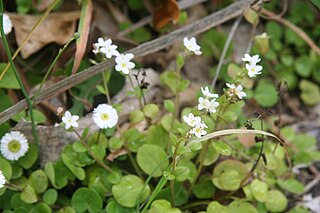
Myosotis pansa subsp. praeceps is a subspecies of flowering plant in the family Boraginaceae, endemic to the North Island of New Zealand. Lucy Moore described the variety M. petiolata var. pansa in 1961, and it was transferred to a subspecies of M. pansa by Heidi Meudt, Jessica Prebble, Rebecca Stanley and Michael Thorsen in 2013. Plants of this species of forget-me-not are perennial rosettes with partially bracteate inflorescences and white corollas with exserted stamens.
